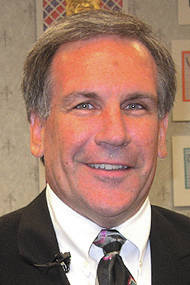
At the end of August, the state Board of Education unveiled its five-year strategic plan, known as “#EachChildOurFuture,” which, we are told, will serve as a roadmap for schools, educators, policy makers and others to guide the development of practices and policies to improve the entire state education system. This is approximately the one-thousandth such plan that has been created inside the confines of Columbus proper over the last 25 years that has claimed it will ensure that all children will have an equal opportunity to achieve success. The previous 999 have failed in that mission. So will this one.
You have to give the board credit, because it has learned from its legislative friends how to roll out a plan with all the propaganda boxes checked. They always start with a pithy little name. After all, who could disagree with “#EachChildOurFuture,” just as who could have quibbled with President Bush’s “No Child Left Behind,” or President Obama’s “Race to the Top” and “Every Child Succeeds?” Of course, none of those delivered the goods they promised, which was that schools can ensure that all children will succeed regardless of what a their life outside of school is like. But a cute name does not a successful plan make.
Another political strategy is to tout that a policy was developed “after receiving feedback from citizens.” The state board predictably assures us that this plan was developed “by Ohioans, for Ohioans…with over 1,300 parents, caregivers, educators, higher education representatives, employers, business leaders, community leaders, state legislators, and students” participating in the process.
In other words, education continues to be one of the few professions that continually asks people with little to no expertise in its field what it takes to achieve success in its field. That makes no sense to me.
Playing loosely with the facts and artfully crafting misleading statements to confuse whoever is reading it is also a common practice in political rollouts. For example, this particular plan states: “Competent, caring teachers are the single greatest contributor to a child’s success in school.”
While the research does suggest that when a child is at school, the teacher is the most important factor in his or her experience there, it does not suggest that a child’s teacher is the greatest contributor to his or her success in school. It is a fact that many other factors, such as a child’s poverty level, the education level of his or her parents, the trauma he or she has endured in life, and his or her God-given ability are far more impactful to his or her success than a teacher is. Basing a strategic plan on a false concept is a recipe for failure.
While playing loosely with the facts and issuing misleading statements is standard political fare we have all come to expect, it is not a harmless strategy. Ignoring what we know is true about what impacts children the most stifles meaningful conversations about how we can best help them thrive. That is why policy makers have been unsuccessfully engaging in these same conversations for decades now.
The state’s strategic plan has also adopted the typical “head in the sand” approach to problem solving in that its authors acknowledge that a problem exists without the slightest notion as to why it exists. For example, the plan reads, “National indicators suggest that the supply of teachers may be decreasing.” The document even contains the board’s plan to reverse this trend with the goal being to “attract, prepare, recruit, hire, develop, and retain teachers.”
Apparently the folks in Columbus are unaware that THEY are the reason people are leaving the profession and why fewer young people are showing interest in entering it. Decades of foolish legislative mandates and unreasonable expectations have made what should be a rather simple task; educating children; nearly impossible. Who, willingly, signs up for that? Unless the mentality changes at the state level, this trend will not be reversed.
The final nail in the coffin for this strategic plan is the fact that the head of the Senate Education Committee, Peggy Lehner, and the head of the House Education Committee, Andrew Brenner, both endorsed it. These two “leaders” in Ohio’s education policy development have not engaged in a meaningful discussion about how children become successful during their entire tenures in their positions, so their affirmation is worthless.
I would expect the state superintendent and members of the state board to take issue with my criticism. They might point to the fact that their plan does discuss the impact issues like prenatal care and early childhood education have on a child’s life, and they would be correct. But it does so only superficially under the pretense that the state can somehow undo the damage done by a child’s faulty environment.
For example, when it talks about the importance of early childhood education beginning at birth, it does so with the notion that it is the state’s job to take on that responsibility instead of emphasizing the role parents MUST play in the process. It is as if the all-knowing, all-powerful state can swoop in and create programs that will make children successful regardless of their life experiences. Well, it can’t, and we have decades of evidence to prove it.
Educating a child is a team effort, with the most important members of that team being a child’s parents and /or caregivers, so that must be the starting point for any education plan. The lead statement in any educational plan must be, “Parents and caregivers are the most important educators in a child’s life.” With that as the starting point, perhaps we could then discuss how schools and parents can work together to create a better life for our kids.
But, our “leaders” refuse to go there. Thus, they continue to fail.


